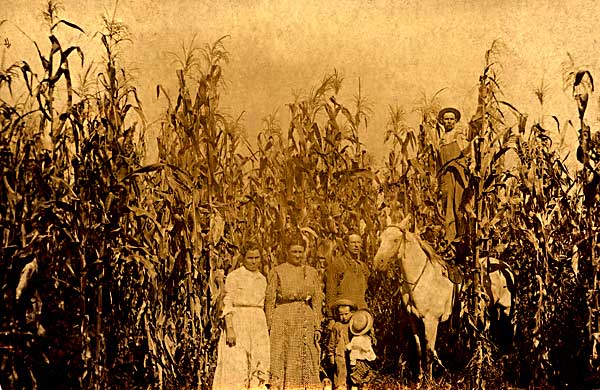 |
||
|
Our early Thomas Morgan families in America spent most of their time in the fields farming or in farming related activities such as hauling crops to market, purchasing seeds and other supplies needed for farming, and obtaining and maintaining farming equipment. Farming was the single most important activity the men, women and children engaged in most days of thier lives. And horses were the primary source of power with which the heavy work of farming was accomplished. |
|||
|
Since farming was the single most important activity in the lives of our early Thomas Morgan families, it follows that success
or failure in farming determined the quality (And the stress level) of their lives. The first imperative of economic survival
was the successful production of farm crops each year. Good crops meant money (or barter) enough to pay the bills, buy supplies
needed for next year, and to supply the family with clothing, housing and other life essentials. Bad, or lost, crops meant
poverty, hardship and struggle to maintain life until another farming year, and a chance to try again, rolled around.
 The picture above is a bit of an exaggeration, of course, but it illustrates an important point. When a good farming year resulted in a really good crop there was rejoicing and celebration in the farming community. In our modern, more prosperous, times it can be difficult to remember that in those days people labored from dawn till dusk all summer at brutally hard labor to bring in a crop that weather, insects, drought or other mishap might snatch from them at any moment. A good crop was a mighty relief that called for thanks to God and at least a little celebration! And while a farmer had to have knowledge and proficiency in irrigation, crop selection, timing and other nuances of crop production, it was skill with horses and horse drawn machinery that was required for successful execution of most farming tasks. Since horses and horse drawn machinery were so important in the lives of our early families we have decided to present a special section in this Morganclan.com website devoted to farming with horses.
It would be a mistake to think that farming with horses made the work easy for the people involved. The house in this picture is made of hand hewn logs. Horses probably pulled the logs off a mountain but a man had to drive the horses and figure out how to get the logs up onto a wagon. Horses pulled the loaded wagon home but people had to get the logs off the wagon, chopped to size, and stacked to make a cabin. Farming with horses was a good life but it was a hard and dangerous life. Click on the links below to be taken to our collection of historical farming with horses pictures and descriptions of the horse drawn machinery being used and explanations of what it was used for. |
|||
